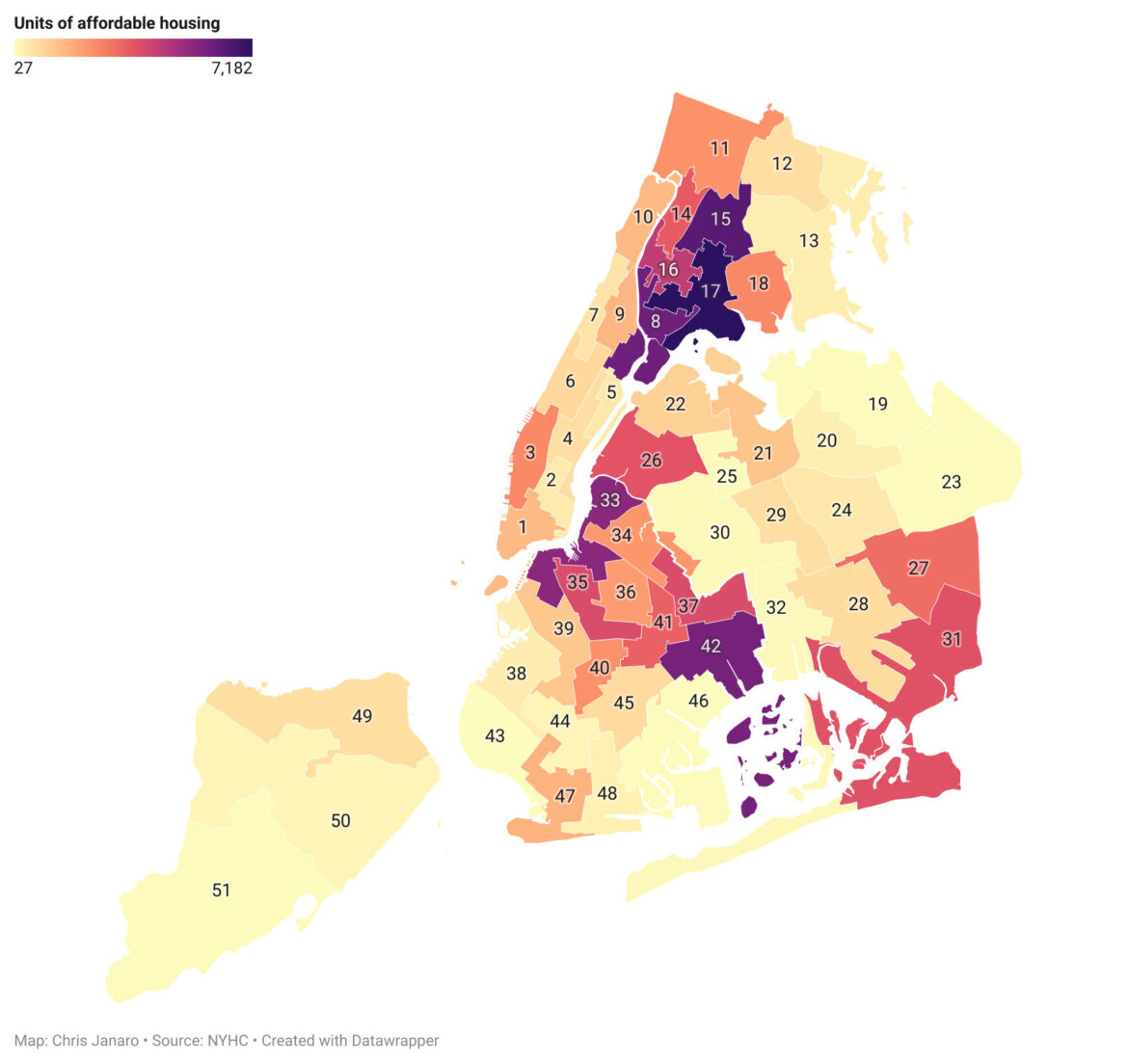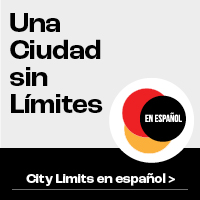
“The reality is that we have a housing crisis, but the South Bronx cannot bear the burden of affordable housing alone,” said Council Member Rafael Salamanca, whose district produced the largest number of affordable units last year and in the past decade. “We need all 51 city council districts to do their fair share.”

Chris Janaro
City data compiled by the New York Housing Conference shows how many affordable housing units were built in each City Council district between 2014 and 2023.
This article was originally published in English on July 2. Translated by Daniel Parra. Read the English version here.
While New York City faces a shortage of available housing With record numbers of people already homeless, a new report highlights which neighborhoods have built the most affordable housing—and which are falling behind.
The latest report from NYC Housing Trackerreleased Thursday by the New York Housing Conference (NYHC), reveals the total number of affordable units created in each City Council district since 2014. As in previous analysisproduction was concentrated in only a handful of the city’s 51 wards, many of which were already high-density areas with higher populations of people of color.
According to the report, in the 10 districts that produced the most affordable housing, 70 percent of residents were black or Latino, compared with 30 percent of residents in the 10 that produced the best rate of new housing.
“The overall data is the same story we reported last time,” Rachel Fee, executive director of NYHC, told City Limits. “We have communities of color in neighborhoods where land costs are lower, producing the majority of affordable housing, and then we have low-density communities that are really choosing not to be part of the solutions and producing no or very little affordable housing.”
A clear example is in the Bronx in Council District 17, which had the highest number of new affordable housing units built last year—1,266 apartments, or 8.9 percent of the city’s total 14,277 units—matching the output of the 28 districts with the lowest rates combined.
While the city’s 2023 housing production was the highest in decades, it doesn’t address the rock-bottom 1.4 percent vacancy rate reported by the New York City Department of Housing Preservation and Development (HPD) in February — nonetheless, housing advocates say there is reason for optimism going forward.
With the approval of the state plan Affordable Neighborhoods for New Yorkers (Affordable Neighborhoods for New Yorkers or ANNY) earlier this year, which came to replace the 421 tax benefit for developers who included affordable housing units, coupled with a possible approval of housing rezoning in the plan “City of Yes“By Mayor Eric Adams, construction could not only increase, but also be more equitably distributed across the five boroughs.
“We’re not going to see dramatic changes overnight. But I think we don’t have a real focus from our elected officials on providing solutions,” Fee said. Those changes, he added, would likely allow for more housing to be built in lower-density neighborhoods.
The city’s new budget, approved a few weeks ago, included a $2 billion boost in housing funding. And starting next year, the city is expected to begin working on a plan that sets housing production goals for each Council district, as a result of the Fair Housing Framework Approved Last Year by Council President Adrienne Adams.
“I think the other really important thing to know is that in addition to the fiscal tools and zoning changes, we have a council that is demanding more investment in affordable housing,” Fee added.
Susan Zhuang, a council member representing the 43rd District, which encompasses the Brooklyn neighborhood of Bensonhurst, was recently elected in 2023, and this was the district with the lowest affordable housing construction in the past decade, at just 27. She said she is pushing to change this, especially when it comes to affordable housing for seniors.
“The first thing that [hice] After being elected to office, I contacted HPD, also the Council’s land use department, to try to find a public space in my district. [en] “where to build,” Zhuang said during a phone call after the report was released. The will to build is there, but finding available city-owned land to develop has been a challenge, he added.
Brooklyn Community Board 11 in your district voted against the mayor’s “City of Yes” plan for housing opportunity, which would ease zoning requirements to facilitate more residential construction. The proposal includes a “Town Center Zoning” component, which would allow for the construction of apartments above commercial businesses.
“So we need to build higher, but at the same time, we have to have a balance,” said Zhuang, who believes there are probably some elements of the proposal that his constituents might like — though not all of them. “I have to represent my community. That’s my first priority.”
According to Councilman Salamanca, fear of voter retaliation could be reduced by the passage of the “City of Yes” plan. He gave as an example Marjorie Velazquez, former Councilwoman for the 13th District of the Bronx, who after change your mind and supported a residential rezoning along Bruckner Boulevard last year, failed to win re-election, in part because of public backlash.
“Their community was outraged and they lost the election because of it,” Salamanca told City Limits. If the City of Yes plan is approved, he added, it would allow property owners more opportunities to build outright, without having to seek council approval for a zoning change.
“I think what the mayor is doing here is kind of striking the right balance, changing the zoning laws, which will make it easier for a council member to negotiate a project at a Community Board meeting because once it’s law, it’s no longer, ‘Oh, we don’t want this,'” he said.
To contact the reporter of this story, write to Chris@citylimits.orgTo contact the editor, please write to Jeanmarie@citylimits.org.






